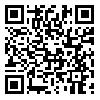1. Akhavan Tafti M. Acknowledging the Difference: Lessons from Differentiated Instruction, Multiple Intelligences, and Visual-Spatial Learning Theories for Students with Learning Disabilities. Appl Psychol. 2014;2(6):1-10.
2. Association AP. Diagnostic and Statistical Manual of Mental Disorders (DSM-5®). American Psychiatric Pub; 2013.
3. Hallahan DP. Learning disabilities: Foundations, characteristics, and effective teaching. 3rd ed. Recording for the Blind & Dyslexic; 2005.
4. Lerner J. Children with learning disabilities: Theories, diagnosis, and teaching strategies. 9th ed. Boston: Houghton Mifflin; 2002.
5. Davis RD, Braun EM. The Gift of Learning: Proven New Methods for Correcting ADD, Math & Handwriting Problems. New York: Penguin; 2003.
6. Mercer CD, Pullen PC. Students with learning disabilities. 7th ed. New Jersey: Upper-Saddle River; 2009.
7. Torgesen JK, Wagner RK, Rashotte CA. Longitudinal studies of phonological processing and reading. J Learn Disabil. 1994; 27 (5): 276-86. [
DOI:10.1177/002221949402700503]
8. Kavale KA, Spaulding LS, Beam AP. A time to define: Making the specific learning disability definition prescribe specific learning disability. Learn Disabil Q. 2009;32(1):39-48. [
DOI:10.2307/25474661]
9. Kauffman JM. A sense of place for special education: How does where affect what? Lecture at the John F. Kennedy Center for Research on Education and Human Development.. Vanderbilt University, Nashville, TN, 1992 (March).
10. Gerber PJ, Ginsberg RJ. Identifying Alterable Patterns of Success in Highly Successful Adults with Learning Disabilities. Executive Summary. 1990;25:475-87. [
DOI:10.1177/002221949202500802]
11. Bryan TH. Peer popularity of learning disabled children. J Learn Disabil. 1974;7(10):621-5. [
DOI:10.1177/002221947400701007]
12. Wong BY, Donahue ML. The social dimensions of learning disabilities: Essays in honor of Tanis Bryan. Routledge; 2002. [
DOI:10.4324/9781410613127]
13. Fuchs LS, Fuchs D. Effects of systematic formative evaluation: A meta-analysis. Except Child. 1986;53(3):199-208. [
DOI:10.1177/001440298605300301]
14. Brody LE, Mills CJ. Gifted children with learning disabilities: A review of the issues. J Learn Disabil. 1997;30(3):282-96. [
DOI:10.1177/002221949703000304]
15. Davis RD, Baun EM. The Gift of Dyslexia: Why Some of the Smartest People Can't Read, and how They Can Learn. A Perigee Bk/Berkley Publishing Group; 1997.
16. Pfeiffer S, Davis R, Kellogg E, Hern C, McLaughlin TF, Curry G. The Effect of the Davis Learning Strategies on First Grade Word Recognition and Subsequent Special Education Referrals. Read Improv. 2001;38(2):74-84.
17. Stainsby M. Living with dyslexia: the Davis Method claims high rate of success in teaching dyslexics to read. Vanc Sun. 2001.
18. SHayan N, Akhvan TM, Ashayeri H. Impact of Davis dyslexia correction method on the improvement of the adult dyslexics 'reading skills. 2011;7(12):23-46. [Persian]
19. Feizipoor H, Akhavan TM. The effectiveness of davis, dyslexia correction method re-examined in iran. New Thoughts on Education. 2005;1(1):39-50. [Persian]
20. Marshall A. Davis Dyslexia Correction-a brief overview. Dyslexia Online Mag. 2010.
21. Horwitz B, Rumsey JM, Donohue BC. Functional connectivity of the angular gyrus in normal reading and dyslexia. Proc Natl Acad Sci. 1998;95(15):8939-44. [
DOI:10.1073/pnas.95.15.8939]
22. Shaywitz SE, Shaywitz BA, Fulbright RK, Skudlarski P, Mencl WE, Constable RT, et al. Neural systems for compensation and persistence: young adult outcome of childhood reading disability. Biol Psychiatry. 2003;54(1):25-33. [
DOI:10.1016/S0006-3223(02)01836-X]
23. Santrock JW. Educational psychology: Classroom update: Preparing for praxis and practice. 5th ed. Boston: McGraw Hill; 2011.
24. Narimani M, Rajabi S. A study of the prevalence and causes of learning disorders among elementary students of Ardebil province. 2006;17(3):231-52. [Persian]
25. Same SKL, Alizadeh H, Koushesh M. The impact of visual perception skills training on reading performance in students with dyslexia. Advances in Cognitive Science. 2009;11(2):63-72. [Persian]
26. Naderi E, Seife Naraghi M. Specific Learning Disabilities. Tehran: Amirkabir Pub; 2003. [Persian]
27. Behrad B. Meta-analysis of prevalence of learning disabilities among primary students in Iran. Research on Exceptional Children. 2006; 18 (4): 417-36. [Persian]
28. Munzert AW. Test Your IQ. Yazdanpanah A.(Persian translator). Tehran: Association for parents and educators; 2005. [Persian]
29. Silverman LK. The visual-spatial learner. Prev Sch Fail Altern Educ Child Youth. 1989;34(1):15-20. [
DOI:10.1080/1045988X.1989.9944547]
30. Marshall A. Brain Scans Show Dyslexics Read Better with Alternative Strategies. Retrieved April. 2003;13:2010.
31. Hutzler F, Kronbichler M, Jacobs AM, Wimmer H. Perhaps correlational but not causal: No effect of dyslexic readers' magnocellular system on their eye movements during reading. Neuropsychologia. 2006;44(4):637-48. [
DOI:10.1016/j.neuropsychologia.2005.06.006]
32. Tabachnick BG, Fidell LS, others. Using multivariate statistics. 5thed. NJ: Pearson Allyn & Bacon; 2001.
33. Zandi B, Nematzadeh Sh, Samaii SM, Nabifar Sh. Investigation and description of writing errors of primary second grade students. Journal of research in exceptional children. 2006;6(2): 623-38. [Persian].






